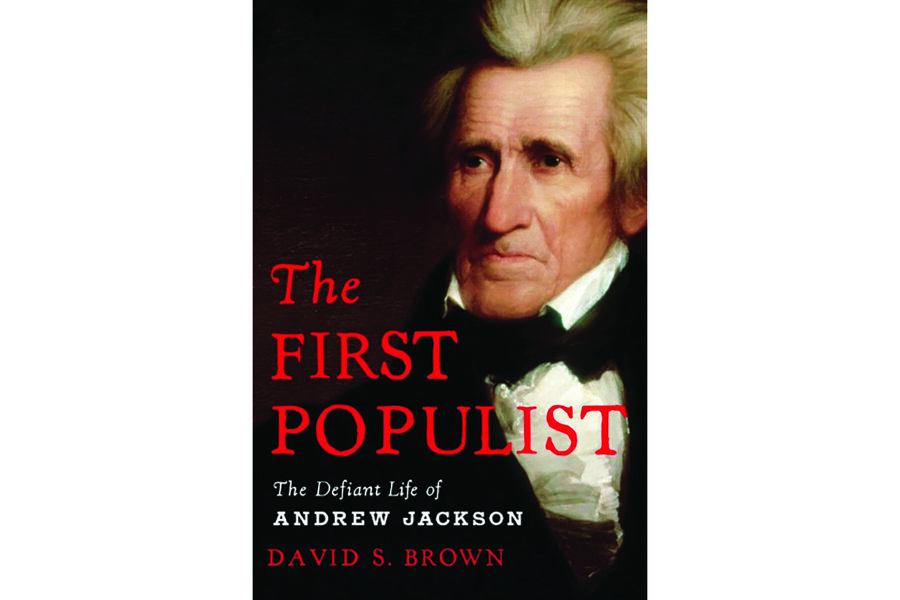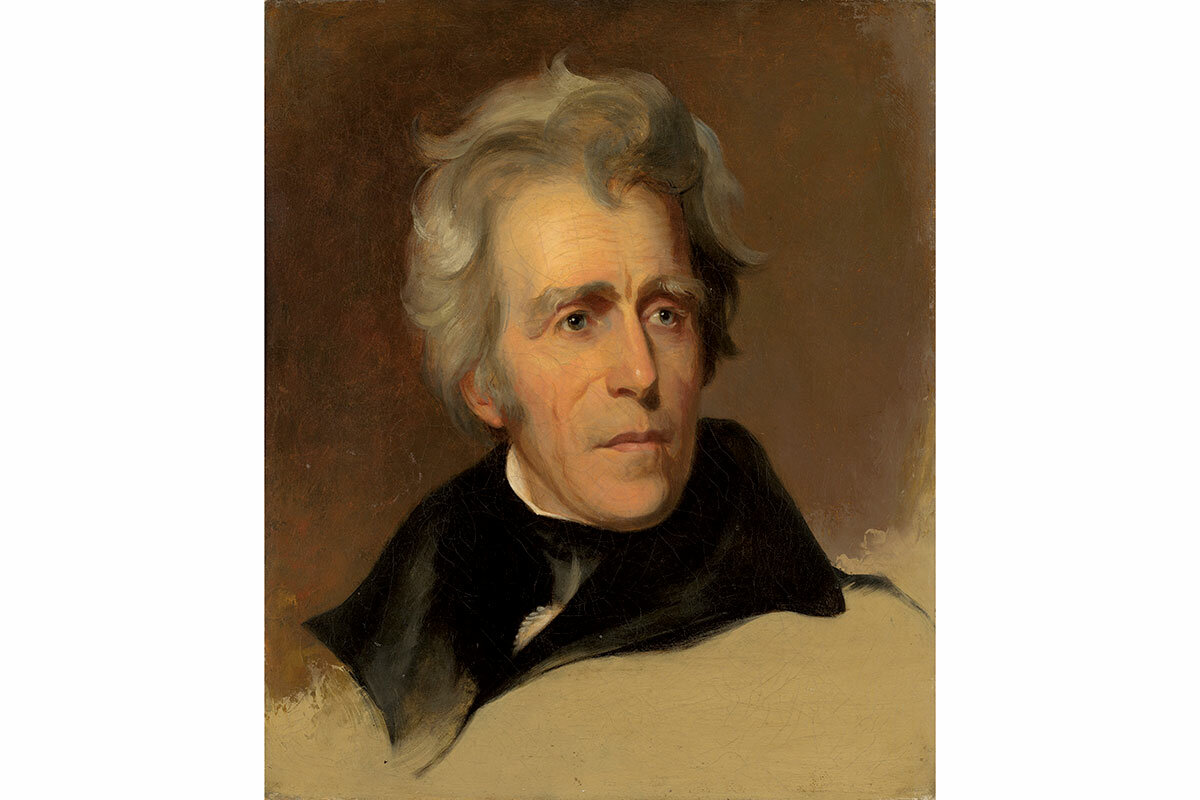Andrew Jackson: The ‘original anti-establishment president’
Loading...
David S. Brown’s compelling new biography of a former American president depicts a man who was imperious and sensitive to slights and collected enemies throughout his career. He ran for the presidency as a populist who condemned elites and convinced voters that he could turn back the clock in a changing America. Many denounced him for his autocratic tendencies, but the criticisms did little to slow his rise.
While this description carries echoes of recent history, the presidency of Brown’s subject commenced nearly 200 years ago. In “The First Populist: The Defiant Life of Andrew Jackson,” the author covers the early years, military service, and political career of the seventh president, the most significant leader between the eras of Jefferson and Lincoln.
Jackson was born in 1767 in the Waxhaws region, which encompassed present-day North and South Carolina. He would become the first American president who didn’t hail from either Virginia or Massachusetts. He is also the only president to have been a prisoner of war, having been captured by the British while serving as a courier during the Revolution. Of his rough and impoverished youth, Brown writes, “mere survival undoubtedly constituted Jackson’s greatest accomplishment during these dangerous years.” Indeed, the future president’s entire family, his parents and two brothers, had all died by the time he was 14.
The ambitious young Jackson, eager to improve his station, took up the study of law. He moved to Tennessee, where, in addition to practicing law, he became a land speculator and opened a general store. He married Rachel Donelson, who, unbeknownst to the couple, was still legally married to her first husband, from whom she had separated. While Donelson and Jackson remarried in 1794, after her divorce became final, the bigamy controversy would dog Jackson during his political campaigns.
During this period Jackson had brief, unremarkable stints in public service, as a congressman, senator, and justice on Tennessee’s superior court. But several episodes of violence damaged his reputation. Easily insulted, he was quick to challenge antagonists to duel. In 1806, after a disagreement over a horse race, he killed one man in a duel and publicly caned another. Brown calls him “a prisoner of his passions.”
Jackson’s military service reversed his flagging fortunes, earning him national renown (and the enduring nickname “Old Hickory,” for his toughness as a general). Between 1813 and 1815 he defeated the Red Stick band of Creek Indians in the Creek War; British and Spanish forces in Florida at the Battle of Pensacola; and, most famously, British troops in the War of 1812’s brief and bloody Battle of New Orleans.
As a military leader he was prone to conducting his own foreign policy in the field and curtailing civil liberties when it suited him, but in part due to his immense popularity, which Brown writes is “difficult to overemphasize,” the government seemed to throw up its hands at its rogue hero. John Quincy Adams, who preceded Jackson as president, described the 30-minute New Orleans battle as “a victory more complete over the people of the U.S. than over the soldiers of Great Britain.”
The affection many Americans held for the general carried him to the presidency in 1828. (He was the first president to be a Democrat, a party that evolved from the Democratic-Republicans.) Brown ably summarizes the controversies and concerns of Jackson’s two terms, which saw unprecedented expansion of executive power. These include the Bank War, in which Jackson refused to recharter the national Second Bank of the United States, and the nullification crisis, which ensued after South Carolina declared a federal tariff null and void within the state, arguing that it was unconstitutional.
While those episodes were consequential in antebellum America, Jackson today is remembered more for what Brown calls the “savage side of the American character.” He dispossessed almost 60,000 Native Americans of their tribal land through the Indian Removal Act of 1830; an estimated 4,000 perished during the brutal westward march. In addition, he was a firm supporter of slavery (whose expansion was enabled by the removal of Indigenous people), and he himself held 150 enslaved people at the time of his death. He was contemptuous of abolitionists and as president attempted to prohibit anti-slavery literature from being mailed to the South.
Brown, a historian and author of biographies of Henry Adams and F. Scott Fitzgerald, succeeds in placing his subject in the context of his fraught times. Claiming to represent the common man, Jackson was distrustful of experts and elites and held on to a fading agrarian vision of America. “Jackson remained wedded to an old republic,” Brown writes, “although it was slowly giving way to a more complex, integrated, and industrial future.”
The combative seventh president has of course been the subject of many previous biographies. By assessing the frequent comparisons between Jackson and Donald Trump, Brown is positioning his reexamination of Jackson as a particularly timely one. The hope is that a fresh understanding of the divisive times of “the country’s original anti-establishment president” might shed light on our own.







